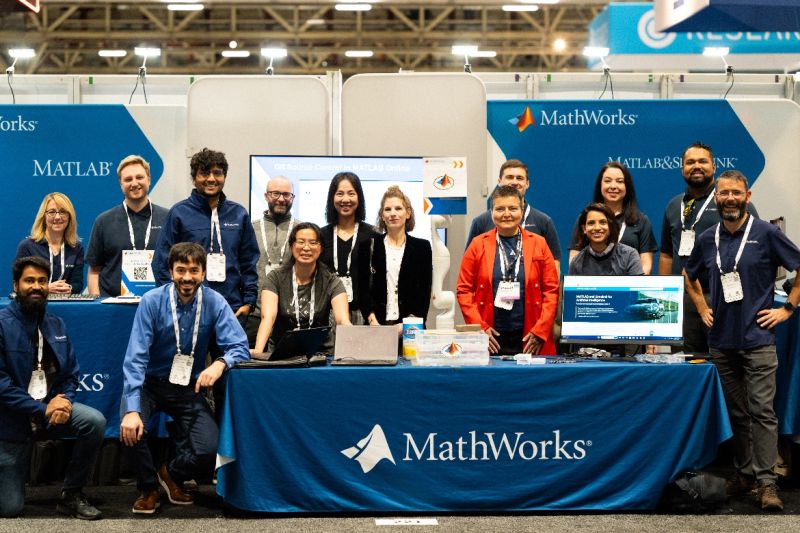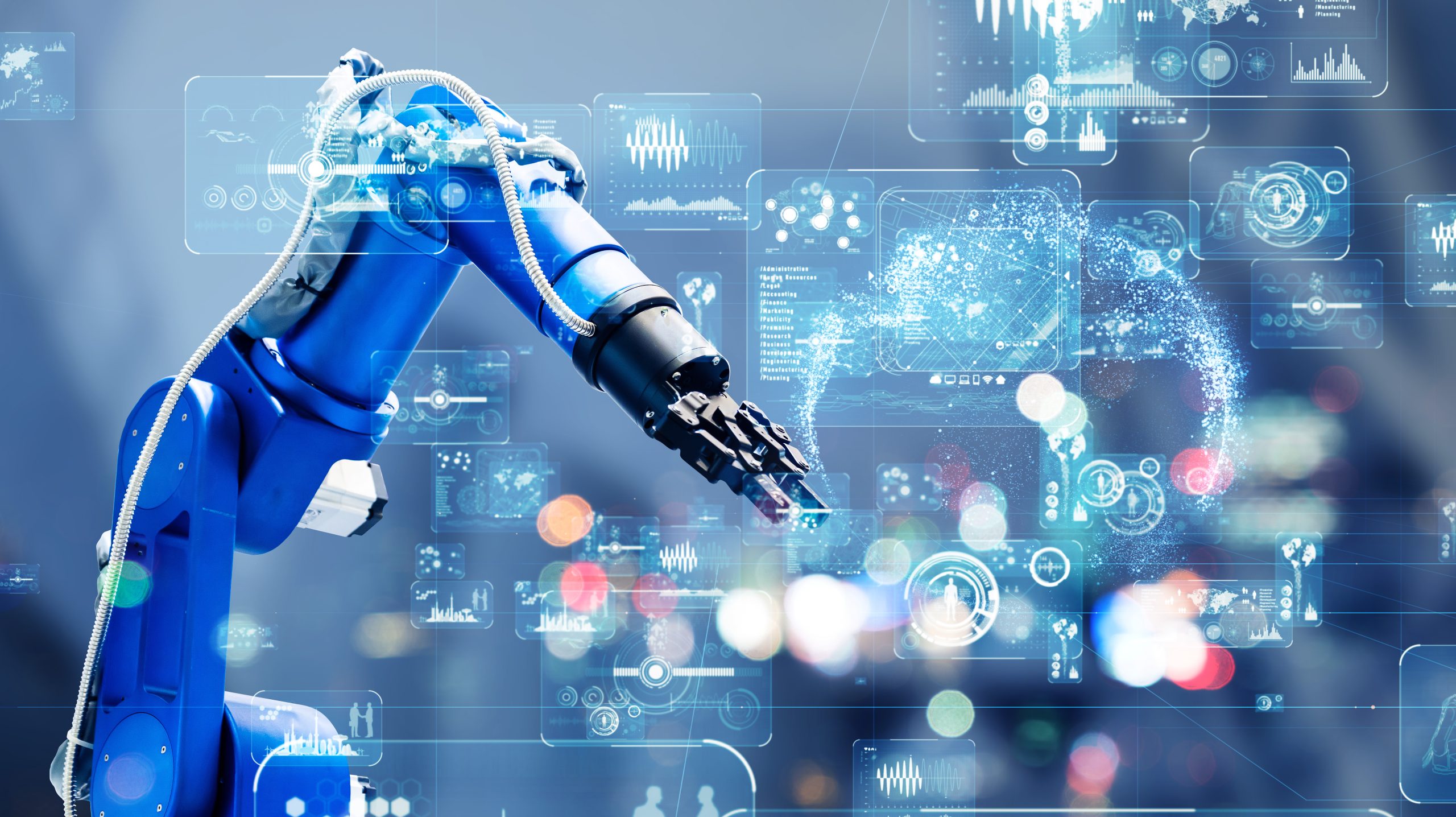NeurIPS Highlights
We are back from the NeurIPS 2023 conference. It was truly inspiring to engage with the AI community and learn more about the current developments and future of AI. We also enjoyed the opportunity to share how you can use MATLAB to integrate AI into cyber-physical systems. In this blog post, I am going to present some highlights from the MATLAB AI team’s presence at the conference.
 Figure: Our team at the MathWorks booth
Left to right (front): Ashvant Ram Selvam, Lucas García, Brenda Zhuang, Sivylla Paraskevopoulou, Anoush Najarian, Maitreyi Chitale, and Jon Cherrie
Left to right (back): Mary Ann Freeman, Antoni Woss, Naren Srivaths Raman, Conor Daly, Jianghao Wang, Kevin Holly, Elvira Osuna Highley, and Abhijit Bhattacharjee
Figure: Our team at the MathWorks booth
Left to right (front): Ashvant Ram Selvam, Lucas García, Brenda Zhuang, Sivylla Paraskevopoulou, Anoush Najarian, Maitreyi Chitale, and Jon Cherrie
Left to right (back): Mary Ann Freeman, Antoni Woss, Naren Srivaths Raman, Conor Daly, Jianghao Wang, Kevin Holly, Elvira Osuna Highley, and Abhijit Bhattacharjee
 Figure: Lucas García and Naren Srivaths Raman presenting talks on Incorporating ML Models into Safety-Critical Systems and Reinforcement Learning: Trends, Applications, and Challenges, and Maitreyi Chitale presenting a poster on Farm-To-Plate-AI.
Figure: Lucas García and Naren Srivaths Raman presenting talks on Incorporating ML Models into Safety-Critical Systems and Reinforcement Learning: Trends, Applications, and Challenges, and Maitreyi Chitale presenting a poster on Farm-To-Plate-AI.
 Figure: (left) The robot arm and Naren, the robot programmer. (right) Elvira playing Tic-Tac-Toe against the robot.
Watch the video below to see the robot in action.
Figure: (left) The robot arm and Naren, the robot programmer. (right) Elvira playing Tic-Tac-Toe against the robot.
Watch the video below to see the robot in action.
 Figure: At the WiML (Women in Machine Learning) event at NeurIPS.
Figure: At the WiML (Women in Machine Learning) event at NeurIPS.
 Figure: Our team at the MathWorks booth
Left to right (front): Ashvant Ram Selvam, Lucas García, Brenda Zhuang, Sivylla Paraskevopoulou, Anoush Najarian, Maitreyi Chitale, and Jon Cherrie
Left to right (back): Mary Ann Freeman, Antoni Woss, Naren Srivaths Raman, Conor Daly, Jianghao Wang, Kevin Holly, Elvira Osuna Highley, and Abhijit Bhattacharjee
Figure: Our team at the MathWorks booth
Left to right (front): Ashvant Ram Selvam, Lucas García, Brenda Zhuang, Sivylla Paraskevopoulou, Anoush Najarian, Maitreyi Chitale, and Jon Cherrie
Left to right (back): Mary Ann Freeman, Antoni Woss, Naren Srivaths Raman, Conor Daly, Jianghao Wang, Kevin Holly, Elvira Osuna Highley, and Abhijit Bhattacharjee
3 Talks and A Poster
Here, you can find an overview of the talks and poster presented by MathWorks at NeurIPS, including links to slides. Figure: Lucas García and Naren Srivaths Raman presenting talks on Incorporating ML Models into Safety-Critical Systems and Reinforcement Learning: Trends, Applications, and Challenges, and Maitreyi Chitale presenting a poster on Farm-To-Plate-AI.
Figure: Lucas García and Naren Srivaths Raman presenting talks on Incorporating ML Models into Safety-Critical Systems and Reinforcement Learning: Trends, Applications, and Challenges, and Maitreyi Chitale presenting a poster on Farm-To-Plate-AI.
Talk 1
From Theory to Practice: Incorporating ML Models into Safety-Critical Systems Lucas García In this talk, Lucas delved into the complexities of certifying neural networks for safety-critical applications, with a particular focus on the aviation industry. The presentation introduced AI Certification in the aviation industry, and a case study for a runway sign classification system in the cockpit designed to improve pilot navigation and situational awareness. By walking the audience through each step of the workflow—from requirement definition to model training and system validation—the talk provided a comprehensive blueprint for integrating neural networks into safety-critical systems for low criticality applications, paving the way for future advancements in industry-specific certification standards. SlidesTalk 2
Using AI to Improve Control Design Workflows Naren Srivaths Raman Control systems are ubiquitous and enable the safe and predictable operation of airplanes, cars, and energy systems. Just as in other engineering disciplines, control engineers are interested in the new possibilities AI offers to enhance traditional solutions. The talk covered several areas where AI is gaining interest and adoption among control engineers and researchers. In this talk, Naren (1) explored AI for modeling a system controlled (plant) with techniques such as nonlinear system identification and reduced order modeling (ROM), (2) discussed the use of AI for virtual sensor modeling and control algorithm design, in particular, the design of nonlinear model predictive control (MPC) using neural state-space (NSS) models, and (3) touched upon how reinforcement learning (RL) can be used as a tool for controller tuning or can replace a traditional controller altogether. Finally, Naren introduced some best practices in using AI for controls to address challenges, such as lack of performance guarantees. SlidesTalk 3
Reinforcement Learning: Trends, Applications, and Challenges Naren Srivaths Raman Reinforcement learning (RL) has been gaining attention as a machine learning technique that can automatically learn complex behaviors and realize high performance. RL applications span various domains, including control design, robotics, automated driving, communications, and more. However, reinforcement learning comes with several challenges. These include the need for large amounts of training data, difficulties in tuning hyperparameters, and verification of deep neural network policies. In this talk, Naren discussed trends, applications, and challenges, and introduced ideas, tools, and best practices on how to address these challenges. SlidesPoster
Farm-to-Plate-AI: Enhancing Freshness and Reducing Waste using Computer Vision and Robotics Maitreyi Chitale, Brenda Zhuang, et al. Addressing global food security and reducing waste in the food supply chain are crucial challenges in today's world. The poster highlights the transformative potential of integrating emerging technologies, such as autonomous navigation, artificial intelligence (AI), and computer vision, to optimize farming practices, automate harvesting and grading, and monitor food quality during transportation. By leveraging these technologies, we can effectively address the challenges posed by conflicts, pandemics, climate change, inequality, and the projected 70% increase in food demand due to population growth. We built a workshop with exercises to simulate the pipeline, which included simulating a UAV through different farm configurations, utilizing YOLOv4 and performing transfer learning on it with a smaller dataset to perform object counting of mangoes pre-harvest, and utilizing machine learning on hyperspectral images to gauge the ripeness of mangoes. The workshop was presented at GHC23 to 750+ in-person participants, as well as at virtual WiDS workshop series and beyond. Our poster, which is based on the workshop we created, proposes an end-to-end pipeline, from farm to plate and leverages the combined gains of individual AI and robotics algorithms to optimize the global food supply chain and achieve significant waste reduction.Demos
As promised (in a previous blog post) , we had lots of goodies at our both and cool demos showing the AI Chat Playground (the new GenAI tool for generating MATLAB code), real-time instance segmentation on a GPU, and the crowd favorite demo - a robot playing Tic-Tac-Toe. An RL agent was trained to play the game and the robot used computer vision for recognizing the progress of the Tic-Tac-Toe game on the board. Figure: (left) The robot arm and Naren, the robot programmer. (right) Elvira playing Tic-Tac-Toe against the robot.
Watch the video below to see the robot in action.
Figure: (left) The robot arm and Naren, the robot programmer. (right) Elvira playing Tic-Tac-Toe against the robot.
Watch the video below to see the robot in action.
See You Next Year
We are looking forward to joining NeurIPS again next year for more sharing, events, and booth interactions. Until then, leave your comment here to talk about AI, your workflows, and challenges. Figure: At the WiML (Women in Machine Learning) event at NeurIPS.
Figure: At the WiML (Women in Machine Learning) event at NeurIPS.
- Category:
- Conference,
- Deep Learning,
- Machine Learning









Comments
To leave a comment, please click here to sign in to your MathWorks Account or create a new one.